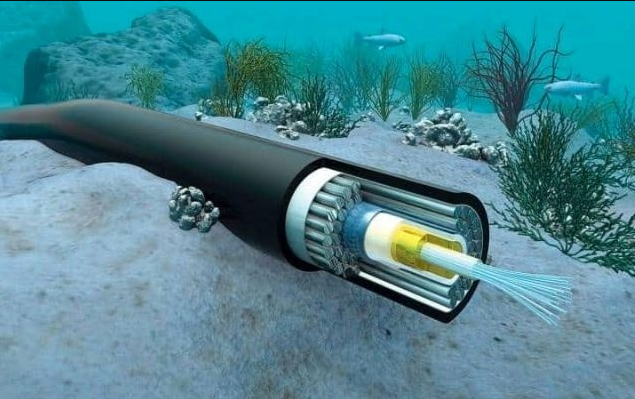Last week, Internet watchdog, NetBlocks said internet connectivity disruption in eight West African countries, including Nigeria, Ghana, Cameroon, Ivory Coast, Liberia, and Benin Republic was a result of undersea cable damage.
NetBlocks, an organisation that monitors cybersecurity and the governance of the Internet, stated this in a post on its X handle on Thursday.
“Live network data show today’s telecoms disruption in #Africa has intensified; the incident has high impact to West Africa with significant reductions in connectivity evident across the continent; operators report multiple subsea cable failures,” NetBlocks posted.
Major internet service providers including West Africa Cable System, Main One, and ACE sea cables were all affected by the development.
MTN Nigeria, in a post on its X handle confirmed the internet disruption. It explained that the network outage experienced by its subscribers was a “result of damage to international undersea cables across East & West Africa”.
“The repair process is ongoing to resolve the situation as soon as possible. Please look out for further updates,” MTN Nigeria said.
The National Communications Authority (NCA) in Ghana said multiple undersea cable disruptions have led to an outage of internet services in the country.
“The disruptions affecting multiple undersea cables responsible for carrying international traffic have occurred in Senegal and Cote D’Ivoire and with some disruptions in Portugal. This has led to a significant degradation of data services across the country.
“It is important to note that the Mobile Network Operators have redundancies on other cables and are working around the clock to restore full services. In addition, the MNOs have informed affected customers of the disruptions via various channels,” the NCA said.
What are undersea telecoms cables?
A submarine communications cable is a cable laid on the seabed between land-based stations to carry telecommunication signals across stretches of ocean and sea. The first submarine communications cables were laid beginning in the 1850s and carried telegraphy traffic, establishing the first instant telecommunications links between continents, such as the first transatlantic telegraph cable which became operational on 16 August 1858.
Submarine cables first connected all the world’s continents (except Antarctica). Subsequent generations of cables carried telephone traffic, then data communications traffic. These early cables used copper wires in their cores, but modern cables use optical fiber technology to carry digital data, which includes telephone, Internet and private data traffic. Modern cables are typically about 25 mm in diameter and weigh around 1.4 tonnes per kilometre for the deep-sea sections which comprise the majority of the run, although larger and heavier cables are used for shallow-water sections near shore.
Today, there are about 380 cables in operation, with a total length of more than 1.2 million kilometres – enough to reach the moon and back with plenty left over.
The cables are often in bundles along the seafloor, meaning that damage is often sustained by more than one cable.
Nearly all of the world’s undersea cables are owned by private companies – telecom operators or investors.
Threats to undersea cables
Undersea cables can be broken or damaged by fishing trawlers, anchors, earthquakes, turbidity currents, shark bites, human accidents and from deliberate human actions.
Undersea cables in the Red Sea
Currently 99% of the data traffic crossing oceans is carried by undersea cables. The Red Sea has 17 percent of all international internet data traffic. If all the cables in the Red Sea are damaged or destroyed, Europe’s communication with some countries in Africa, India and East Asia will be disrupted.
Did Houthi rebels cut the undersea cables to Nigeria, others?
The deliberate threats hovering over undersea cables refer to physical attacks and sabotage targeting the cables.
Yemen’s Houthi rebels have been attacking Israel-linked vessels in the Red Sea in declared support for the people of Palestine. They recently struck a Belize-flagged, UK-owned bulk carrier, the Rubymar, with two missiles. The vessel has sunk and has been leaking oil since the attack and there are fears for the 41,000 tonnes of volatile fertiliser it carried.
Telecom firms linked to Yemen’s internationally recognised government, who oppose the Houthis, said recently that they fear the rebels may target undersea cables.
In February, the Houthis published a map on their Telegram channel that showed the cables running along the bottom of the Red Sea.
However, the Houthis have issued a statement denying responsibility for cutting the cables.
Copyright Ships & Ports Ltd. Permission to use quotations from this article is granted subject to appropriate credit given to www.shipsandports.com.ng as the source.

